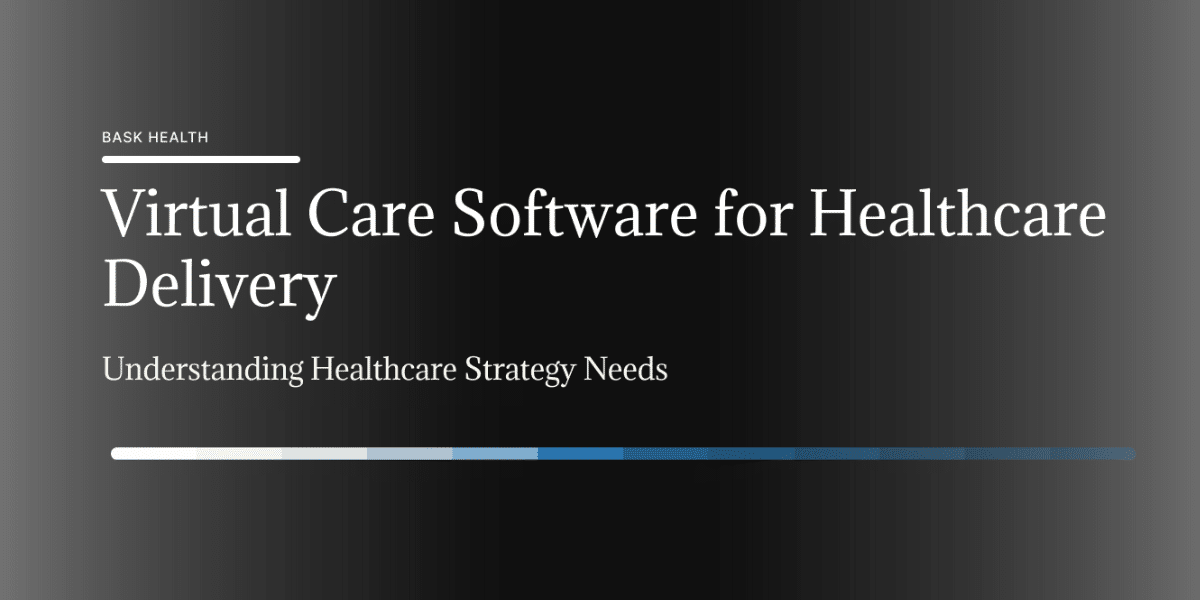Virtual care software has become a cornerstone of modern healthcare delivery, revolutionizing the way providers and patients interact. By combining advanced communication tools with secure data management systems, this technology ensures better access to care and improved patient outcomes. Here, we explore the architecture, features, implementation of premier practices, and emerging trends in virtual care software.
Understanding Virtual Care Software Architecture
Virtual care software architecture underpins the functionality and security of telehealth platforms. It is designed to seamlessly integrate various components to create a cohesive virtual healthcare ecosystem.
Core Components and Technologies
The architecture of virtual care software typically includes the following:
- Cloud-Based Infrastructure: Ensures secure, real-time access to patient records and data.
- Real-Time Communication Systems: Enables video conferencing and secure messaging.
- Clinical Documentation Tools: Streamlines electronic health record (EHR) management.
- Patient Monitoring Interfaces: Facilitates remote tracking of vital health metrics such as heart rate and blood pressure.
Integration Capabilities
Effective virtual care platforms integrate seamlessly with existing healthcare systems like EHRs, laboratory information systems (LIS), and billing systems. This ensures streamlined data exchange and improved care coordination.
Security and Compliance Framework
With patient data security as a top priority, virtual care software adheres to strict regulations such as HIPAA. Key measures include:
- Data Encryption: Protects sensitive information during storage and transmission.
- Access Control: Role-based authentication to prevent unauthorized access.
- Audit Trails: Tracks changes and access to ensure accountability.
Key Features and Functionalities
Modern virtual care platforms boast an array of features that enhance healthcare delivery while maintaining efficiency and security.
Real-Time Communication Tools
These tools facilitate seamless interactions between patients and providers:
- Video Conferencing: High-definition video consultations.
- Secure Messaging: HIPAA-compliant text communication.
- Multi-Participant Sessions: Allows inclusion of caregivers and interpreters.
Clinical Documentation Systems
Efficient documentation systems offer:
- Automated data entry to reduce administrative burdens.
- Customized templates for various visit types.
- Integration with existing EHRs for comprehensive patient care.
Patient Monitoring Capabilities
Remote patient monitoring (RPM) tools allow continuous tracking of vital health metrics, enabling timely interventions and improving outcomes for chronic condition management.
Implementation Premier Practices
To maximize the benefits of virtual care software, healthcare organizations must prioritize robust planning and execution.
Technical Infrastructure Requirements
Essential infrastructure includes:
- Reliable high-speed internet (minimum 50 Mbps).
- HIPAA-compliant video conferencing equipment.
- Secure data storage solutions.
- Backup systems for network redundancy.
System Integration Strategies
Successful integration requires:
- A thorough assessment of existing systems and workflow gaps.
- Standardized protocols for data exchange.
- Comprehensive staff training programs.
Performance Optimization Methods
Healthcare providers should:
- Regularly monitor system uptime and connection stability.
- Use operational and clinical outcome metrics to identify improvement areas.
- Conduct periodic technical checks to ensure optimal performance.
Data Management and Analytics
Effective data management is critical for leveraging virtual care software to improve patient outcomes.
Patient Data Collection and Storage
Virtual care platforms securely handle various types of data, including:
- Personal health information from clinical interactions.
- De-identified data for research and analysis.
Analytics and Reporting Tools
Advanced analytics tools enable healthcare organizations to:
- Monitor patient engagement.
- Assess clinical outcomes.
- Optimize resource allocation.
Predictive Modeling Capabilities
Predictive analytics help providers anticipate patient needs and deliver proactive care, significantly reducing hospitalizations for high-risk patients.
Future Technology Trends
Virtual care software is poised for rapid advancement, driven by innovations in artificial intelligence (AI) and machine learning.
AI and Machine Learning Applications
Key applications include:
- Automated patient triage.
- Real-time health monitoring alerts.
- Enhanced clinical documentation and diagnostic support.
Emerging Integration Standards
Updated standards, such as those from The Joint Commission, emphasize improved data sharing, security protocols, and patient education in telehealth technologies.
Next-Generation Features
Future platforms will integrate wearable devices and personalized medicine tools, enabling tailored treatment plans based on patient-specific data.
Conclusion
Virtual care software is transforming healthcare delivery by improving access, efficiency, and outcomes. With robust architecture, advanced features, and continuous innovation, these platforms empower healthcare organizations to provide secure, patient-centered care. As technology evolves, virtual care solutions will remain indispensable in meeting the diverse needs of modern healthcare.
Discover how Virtual Care Software for Healthcare Delivery is revolutionizing patient care with cutting-edge technology and seamless integration.
Published by Elle G.








